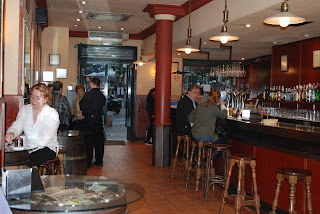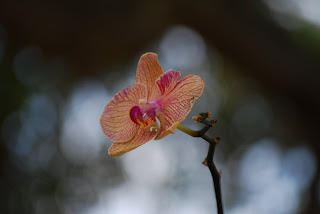



If ever a place on earth can truly convey the concept of infinity, La Mezquita in Cordoba, Spain comes closest. This huge mosque was the jewel of Western Islam from the late 700's when it's construction was begun by the Caliph Abd Al-Rahman when he assumed rule over Moorish Spain in Cordoba until 1236 when the Christian King Ferdinand III conquered Cordoba and reclaimed the city for Christian Spain. It is truly an amazing building and beyond inspiring! Even with the changes to it brought by the Catholic Christians (closing off many of the entrances, especially those that led in from the Courtyard of Orange Trees, by the construction of private family chapels by those wishing to be buried within the walls of what became a Christian house of worship, along with the building of a giant cathedral right in the middle of the mosque) it is still a wonder to behold. There is nothing else I have ever experienced which has conveyed such a sense of wonder and mystery.
With its sea of columns in muted shades of rose and blue, a ceiling that is only 30 feet high, yet broken up by double arches of red brick and white stone so that it feels even lower, and simple floors of stone or brick it conveys a sense of the embracing, sheltering presence of God. It is the complete opposite of everything a cathedral attempts to communicate. Cathedrals stretch upward, striving to reach heaven, extending the gaze upward toward a distant God. Cathedrals want to remind us of the majesty, wonder, awesome might, grandeur, and power of a God who is both Creator and Sovereign, Ruler and Judge over the Universe.
That is not the sort of place where I worship at home. It is not the type of place which draws me closer to God and evokes within me a sense of God's presence and love. I can be moved by the awe-inspiring works of God in the world - Yosemite Valley, the Grand Canyon, mountains rising to the skies, plains and oceans stretching to the horizon - but it is in the quite times in my own closet, the serene times in a forest glade or by a mountain stream, in the small chapels and simple churches where I am most aware that God is with me. It is in these close, intimate, womb-like spaces where I receive the assurance again that I am beloved by God, that I am not alone in this huge, often cold and impersonal world, but God is watching over me, protecting me, and embracing me in love.
La Mezquita in Cordoba embodies that for me.














































